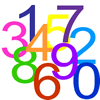Skip over navigation

Absolutely!
Picture the Process I
Approaching Asymptotes
Two-way Functions


Or search by topic
Number and algebra
Geometry and measure
Probability and statistics
Working mathematically
Advanced mathematics
For younger learners
Thinking Functionally

Thinking Functionally
The idea of a function lives at the heart of mathematics and mathematical modelling, and the graphs of functions can be very illuminating. The resources below explore a variety of different functions in both mathematical and practical contexts, and highlight important aspects of the functions' behaviour.
Absolutely! Age 16 to 18
Age 16 to 18
What can you say about this graph? A number of questions have been suggested to help you look at the graph in different ways. Use these to help you make sense of this and similar graphs.
Picture the Process I Age 16 to 18
Age 16 to 18
How does the temperature of a cup of tea behave over time? What is the radius of a spherical balloon as it is inflated? What is the distance fallen by a parachutist after jumping out of a plane? After sketching graphs for these and other real-world processes, you are offered a selection of equations to match to these graphs and processes.
Approaching Asymptotes Age 16 to 18
Age 16 to 18
Can you describe what an asymptote is? This resource includes a list of statements about asymptotes and a collection of graphs, some of which have asymptotes. Use the graphs to help you decide whether you agree with the statements about asymptotes.
Two-way Functions Age 16 to 18
Age 16 to 18
This gives you an opportunity to explore roots and asymptotes of functions, both by identifying properties that functions have in common and also by trying to find functions that have particular properties. You may like to use the list of functions in the Hint, which includes enough functions to complete the table plus some extras.You might like to work on this problem in a pair or small group,
or to compare your table to someone else's to see where you have used the same functions and where not.
You may also like
Making Sense of Statistics
This collection of problems has been put together to help you to explore and understand important ideas in statistics.
Integration as Area
These problems invite you to explore integration as area, and use area integrals to solve problems.

